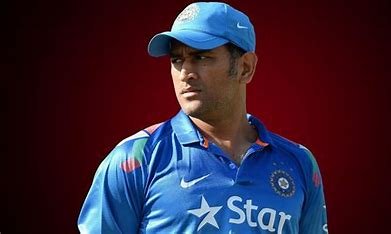The advent of modern-day cricket has brought about significant changes in the sport, marked by the evolution of cricket equipment and strategies. A recent match exemplified these transformations as it witnessed an astonishing display of power-hitting. A total of 754 runs were scored within the stipulated overs, with 74 boundaries and 31 sixes, highlighting the sport’s shifting dynamics.
In contemporary cricket, the focus has shifted from traditional statistics like batting averages to more dynamic metrics like strike rates and the number of balls remaining. Unlike the past when players often prioritized preserving their wickets to boost personal averages, the modern game emphasizes aggressive ball-chasing and run-scoring, ultimately leading to higher-scoring encounters.
Another key lesson from this match is that losing wickets is no longer synonymous with defeat. Sri Lanka’s middle and lower-middle order demonstrated their ability to score quickly, keeping their team in contention despite losing wickets at various stages.
Furthermore, the match highlighted the importance of a deep batting lineup. Teams like South Africa and Sri Lanka, with strong batting depth, maintained momentum even after losing wickets. Examining the run rate between the first and 48th over, Sri Lanka’s performance indicated significant improvement, dispelling the notion that wickets slow down the game. Batting first after losing the toss, South Africa unleashed an explosive display, accumulating a staggering 428 runs for the loss of 5 wickets in their allotted 50 overs. This remarkable feat rewrote the record books, establishing it as the highest team score ever recorded in the history of the ICC World Cup, surpassing Australia’s previous record of 417 runs against Afghanistan in 2015.
Aiden Markram, South Africa’s vice-captain, etched his name into history by achieving the fastest century in ODI World Cup history, reaching this milestone in just 49 balls. This feat surpassed Kevin O’Brien’s previous record of 50 balls against England in 2011. Furthermore, South Africa became the first team in ICC World Cup history to boast three individual centuries in a single match, as Quinton de Kock, Rassie van der Dussen, and Aiden Markram each delivered century innings. This unprecedented achievement underlines the sport’s evolution, with only five instances of teams scoring over 400 runs in a World Cup match.
The ever-evolving nature of cricket in the modern era was also highlighted by the match’s dynamics. In recent years, the sport has undergone a profound transformation, ushering in an era of innovation and excitement, largely catalyzed by the emergence of Twenty20 (T20) cricket. This shortest format has captivated fans worldwide with its fast-paced, thrilling style of play, influencing tactics even in Test and One Day International (ODI) cricket. Captains have become more aggressive, bowlers are deploying innovative deliveries, and batsmen are consistently pushing boundaries with inventive shots.
Batsmen are now the architects of high-scoring matches, employing innovative shots like the switch-hit, upper-cut, and scoop. This has posed a challenge to bowlers, pushing them to devise new strategies and elevating scores across all formats. Fitness and technology have also played pivotal roles in modern cricket. Cricketers are now fitter and stronger, thanks to advancements in sports science and nutrition. Technology, such as the Decision Review System (DRS) and data analytics, has enhanced the accuracy of decision-making and improved player training and development.
Cricket has transcended its traditional strongholds and become a global phenomenon, with T20 cricket paving the way for teams from diverse regions to compete at the highest level. This globalization has fostered the exchange of ideas, strategies, and innovations, resulting in a more competitive and thrilling sport. However, amidst these positive developments, cricket faces its own set of challenges. Balancing the scales between bat and ball in an era of prolific batting dominance remains a constant challenge. The growing disparity between cricket’s elite and emerging teams, fueled by resource disparities and coaching variations, needs to be addressed to ensure a more inclusive cricketing landscape. Corruption continues to loom over the sport, necessitating rigorous anti-corruption measures. Additionally, cricket’s expansion into new, untapped markets holds the promise of growth but requires dedicated initiatives to introduce the game to fresh regions. In conclusion, modern cricket is a testament to the sport’s adaptability and growth. It thrives on innovation, technology, and a rapidly expanding global fanbase. While challenges persist, cricket’s resilience in the face of change promises even more exciting moments and memorable matches on the horizon.















